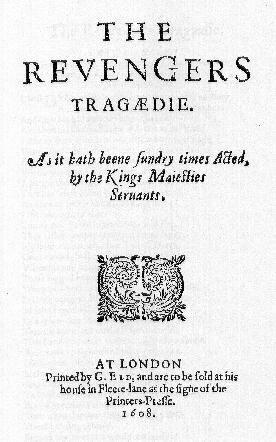“Does the Silkworm Expend Her Yellow Labours/ For Thee?”: Literary Clues in “The Silkworm” – Part 2
by Dr. Beatrice Groves
In August 2017, Rowling gave an interview about The Silkworm in which she touched on the artifice of writing a book in which the plot revolves around a book:
There are many layers in that, and in case people haven’t read the book or watched the programme, I can’t say everything I’d like to say about the book within the book, which obviously contains clues.
The epigraphs of The Silkworm are a self-consciously literary device that alerts the reader to these literary “layers” within the novel. To this extent, the epigraphs of The Silkworm recall Rowling’s first use of epigraphs in Harry Potter and the Deathly Hallows. Rowling noted in an interview how “I always knew [that] if I could use them at the beginning of book seven then I’d cued up the ending perfectly. If they were relevant, then I went where I needed to go. They just say it all to me, they really do.“ Those first epigraphs – one drawn from a foundational text of Western canon (Aeschylus’s Libation Bearers), the other from an obscure text of 18th-century spirituality (William Penn’s More Fruits of Solitude) – were Rowling’s revelation of things she had spent 17 years keeping under wraps. They anticipated various aspects of the final novel’s plot, but they were also the first explicit acknowledgment of both the literary and the theological underpinning of Harry Potter.¹
Cratylic Naming
The epigraphs of The Silkworm, likewise, relate both to the specific chapters in which they appear and carry wider signification. Something that these plays – Restoration comedies, Jonsonian comedies, and Jacobean revenge tragedies – all share with The Silkworm (and indeed, Bombyx Mori) is cratylic naming. Cratylic names are names that accurately describe the nature of the character who bears them, and they are perhaps Rowling’s favorite literary device. Cratylic names are a staple of early modern theater as well as, of course, being deeply familiar to readers of Harry Potter.² Rowling has fun with some particularly obvious examples of Restoration comedy’s delight in cratylic naming: “Mr. Tattle we know our secrets are safe with you” (Congreve’s Love for Love, epigraph to Chapter 6); “Is Master Petulant here, mistress?” (Congreve’s The Way of the World, epigraph to Chapter 9); “Mr. Scandal, I shall be very glad to confer with you about these things which he has uttered” (Congreve’s Love for Love, epigraph to Chapter 36). Such epigraphs draw attention to cratylic naming within The Silkworm: Both the obvious allegorical names of Bombyx Mori (Cutter, Epicoene, Succuba, the Tick, Vainglorious, Bombyx, and Harpy) and the more subtle cratylic naming of The Silkworm itself. Robin, for example, (whom Rowling calls “the most purely loveable character I’ve ever written”) is named after Britain’s most loved bird. Matthew’s surname is amusingly unpropitious³ while Michael Fancourt is surrounded by fans who pay court to him. (The way Fancourt’s charisma affects the opposite sex recalls the name of the similarly magnetic Fleur Delacour – “flower of the court”). Cormoran, meanwhile, is Cornish and tall (like the Cornish giant after whom he is named), and his surname comes from Cornwall too. Rowling has said that she found the name Strike “in a slim book about Cornwall.” My best guess is the slim volume Cornish Short Stories, which contains a murder mystery entitled “Corporal Strike.” Strike’s military title, the story’s genre, and the protagonist’s one-legged father, at least, all form tempting connections.⁴
All these names have played out their signification in the series so far, although there may be a hint about future revelations in Cormoran’s mother’s strikingly classical name. Leda was raped by Zeus in the form of a swan. She also slept with her husband on the same day, and so the children who are born from her eggs – Helen, Clytemnestra, Castor, and Pollux – have unclear paternity (and to compound the confusion, different versions of the myth disagree about the best way to resolve the question). This aspect of the Leda-myth hints that we’ll be hearing more about Strike’s somewhat complex and cloudy paternity, and maybe this will unfold in the aptly named Lethal White. Rowling put up a rather aggressive-looking swan as a Twitter header during the period she was working on this novel, and a fanciful viewer could relate this image to Yeats’s famous sonnet on Leda:
The great wings beating still/ Above the staggering girl” (“Leda and the Swan”)

Perhaps The Silkworm’s most evocative cratylic name, however, is that of its murder victim. Owen Quine is a brilliant name for someone who ends up sharing the fate of his fictional alter-ego because a “quine” is the name of a self-replicating computer program: a program that can only produce a copy of itself. (The program was named after the philosopher Willard Quine, who worked on indirect self-reference and invented Quine’s paradox:
‘Yields falsehood when preceded by its quotation’ yields falsehood when preceded by its quotation.
Owen Quine’s writing appears to be deeply self-referential – “Quine was repeating himself. That’s the second thing from Hobart’s Sin he put in Bombyx Mori” (242) – as does his death. (And Owen Quine sounds rather like “own quine” – the most self-referential name of all!) But Quine is not quite as narcissistic as we are being lead to believe. As with the “yields falsehood when preceded by its quotation” part of Quine’s paradox, so this is false self-quotation, intended to lead the reader up the garden path.
The Conceit of the Novel Within the Novel
Quine’s name points toward the way in which The Silkworm is, as Rowling has said, a “novel about novels with another novel inside it.” Self-conscious artifice and self-reference are also something that link together the dramatic genres of The Silkworm’s epigraphs.

Kyd’s Spanish Tragedy, for example, (the foundational text of revenge tragedy, quoted in the epigraph of Chapter 29) is framed by a meta-theatrical prologue in which Revenge and a ghost sit down to form an on-stage audience for the play as it unfolds. The framing of other early modern drama (such as Shakespeare’s Taming of the Shrew) likewise transforms the entire play into a play within a play, and one (Marston’s Antonio and Mellida) takes this framing device to extraordinary lengths by opening with a scene in which the actors perform the roles of players discussing the roles they are about to play. In The Silkworm, the “novel within the novel,” Bombyx Mori, shares its name with the novel within which it appears. This trick renders the “book within the book” (or mise en abyme) artifice unignorable, and it is also a trick performed by another early modern dramatist, Jonson (from whom eight of The Silkworm’s epigraphs are taken). Jonson’s The Devil Is an Ass was performed at Blackfriar’s theater, and its main character, Fitzdotterell, sets off during the action to see the play that is being performed that day at Blackfriar’s: The Devil Is an Ass. (Wycherley’s Restoration comedy, The Plain Dealer, does something similar, if not quite so surreal when its characters discuss the propriety or otherwise of watching Wycherley’s innuendo-laden Country Wife and then decide to go and check out the play for themselves.)
The Revenger’s Tragedy
This idea of “a play within a play” is now most famous from Shakespeare: in particular, his A Midsummer Night’s Dream and above all, Hamlet. But while Hamlet does not appear in The Silkworm’s epigraphs, a play that is deeply influenced by it – Middleton’s Revenger’s Tragedy – is crucial to Rowling’s novel. The Revenger’s Tragedy, like The Silkworm, circles around a deeply self-reflexive murder: In Middleton’s case, when the skull of Gloriana takes part “in it[s] own revenge” as, daubed with the poison with which she was murdered, it murders its own murderer.

The Revenger’s Tragedy forms a ghostly presence in The Silkworm – constantly turning up in conversation, though never mentioned by name. Both Michael Fancourt and Elizabeth Tassel reminisce about their time “studying Jacobean revenge tragedies” together when they read about “poisoned skeletons dressed up as women” (228, 391). Strike repeats this detail from The Revenger’s Tragedy to Robin, and something about it tugs at his mind:
Something has flickered deep in his subconscious… someone had said… ‘A poisoned skeleton,’ Strike muttered, trying to capture the elusive memory, but it was gone” (242).
This is a clue that The Revenger’s Tragedy is important, although the play is not quoted until much later. When it does appear, however, Rowling has saved her best quotation for the chapter in which the murderer is revealed:
Does the silkworm expend her yellow labours/ For thee? For thee does she undo herself?” (epigraph to Chapter 48)
Vindice, The Revenger’s Tragedy’s eponymous antihero, has a cratylic name (Vindice means “revenger”), and he begins the play by entering with the skull of his dead beloved in his hands.

Vindice played by Christopher Eccleston in Alex Cox’s 2002 film
Hamlet had premiered a few years before, and this allusive opening irresistibly recalls Hamlet addressing Yorick’s skull. This explicit Hamlet reference is followed by many subtler ones, and indeed, The Revenger’s Tragedy is so entwined with Shakespeare’s play that one critic has quipped that The Revenger’s Tragedy “might as well have been written by Hamlet.”⁵

Barty Crouch, Jr. with the father he’s just transfigured into a bone. No, wait…
In the middle of The Revenger’s Tragedy, Vindice returns with Gloriana’s skull (now grotesquely tricked up as a real woman) in order to use it to murder Gloriana’s murderer. Just as Hamlet addresses Yorick’s skull with a bleakly reductive speech against feminine adornment (“Now get you to my lady’s chamber, and tell her, let her paint an inch thick, to this favour she must come”) so Vindice likewise addresses Gloriana’s skull:
Does the silkworm expend her yellow labours/ For thee? For thee does she undo herself?
Vindice notes here the cost of silk production to the silkworm itself – for silkworms are killed inside their cocoons (in order that the undamaged cocoon can be spun into silk). It is a fate echoed by Quine/Bombyx, who, having spun his story, is tied up in ropes and like his silkworm alter-ego, murdered.
The Silkworm reimagines the world of publishing in the lurid light of Jacobean revenge tragedies. Publishing is presented as a swirl of intrigue, deadly grudges, unrevenged deaths, smoldering fires of sexual jealousy, and vainglorious authors to whom others pay court. The disguise familiar from early modern drama (such as Vindice pretending to be Piato throughout The Revenger’s Tragedy or Hamlet hiding under the cloak of his “antic disposition”) is reflected in The Silkworm’s plot: the figure hidden under the burqa and the murderer dressed as Quine. But more subtly, the body swaps rife in early modern drama are rewritten in a literary form. In particular, the infamous “bed trick,” familiar to modern audiences through Shakespeare’s Measure for Measure and All’s Well That Ends Well (a trick that reaches its most macabre incarnation in The Revenger’s Tragedy when Gloriana’s poisoned skeleton takes the place of the body of the young woman) is replayed with manuscripts taking the place of bodies. In The Silkworm, it is texts, rather than people, that are secretly swapped, and the reader who is duped by the exchange.
The Dog That Didn’t Bark in the Night and Hamlet
As discussed above, Hamlet is a significant presence behind The Revenger’s Tragedy, and Hamlet is also recalled by Rowling’s description of Bombyx Mori as “the book within the book.” Hamlet’s “play within the play” is by far the most famous example of the mise en abyme device, and it has some striking links with Bombyx Mori. Hamlet’s “play within the play” is called The Murder of Gonzago, and it acts out the murder of the king by his brother in order to steal his crown and marry his wife and the subsequent revenge of the king’s son on his uncle; it acts out, in short, the plot of Hamlet. This self-reflexive relationship is found likewise in The Silkworm, where the fictional murder within Bombyx Mori echoes the murder that occurs within the main plot.
I’ll have these players
Play something like the murder of my father
Before mine uncle. I’ll observe his looks;
I’ll tent him to the quick. If a do blench,
I know my course.” (2.2.590-94)
Bombyx Mori is “payback time” for Quine, and his enemies’ recognition of themselves within the text is, likewise, intended to make them “blench.” When Claudius shows that he knows the play is about him, he fingers himself as Old Hamlet’s murderer. Likewise, as Waldegrave notes, everyone who recognizes themselves within Bombyx Mori is liable to become a murder suspect.

Here’s another Harry Potter actor cutting his teeth as Hamlet.
One further link between the two embedded texts is crucial to the plot of The Silkworm. For Hamlet’s play within a play, just like The Silkworm’s novel within a novel, has undergone rewriting. Hamlet notes to the players that he will add his own material to The Murder of Gonzago:
A speech of some dozen or sixteen lines, which I would set down and insert in’t” (2.2.535).
The text of Bombyx Mori, like that of The Murder of Gonzago, has been tampered with by someone other than its author, and for the same reason. The new writer has rewritten a fictional murder so that it more accurately fits the murder that has actually taken place.
The Silkworm’s two most striking literary aspects (the revenge tragedy epigraphs and the mise en abyme device) both gesture toward Hamlet, which is at once the most famous revenge tragedy and the most famous example of the mise en abyme device. And the reader who spots the link is rewarded with an important clue about why the novel within the novel echoes Quine’s murder so closely.
Authors, Silkworms, and Self-Reference
Rowling has given the epigraph from The Revenger’s Tragedy – “Does the silkworm expend her yellow labours/ For thee? For thee does she undo herself?” – to the chapter in which the reader finally discovers whose cupboard has a skeleton (or two) rattling inside it. This is also the chapter when she explicitly ties the actions of the silkworms and writers. Directly beneath the epigraph about silkworms, Strike notes “wasn’t this an irresistible situation to a writer, to the compulsive spinner of experience into words, to a lover of the macabre and the strange?” (435). In my post on the Tennyson quotation that closes The Cuckoo’s Calling, I suggested that Strike’s quotation relates not only to the hero but also to the author herself. Strike’s comment here is likewise startlingly self-reflexive. Like the authors within her fiction, Rowling is likewise a “spinner of experience into words,” and the author of The Silkworm can be fairly characterized as “a lover of the macabre and the strange.” Strike’s comment cements the connection between authorial labor and that of the silkworm that was created in Bombyx Mori when Quine places himself in the narrative as Bombyx. It is a connection that reflects onto Rowling herself, given that, like Quine, she has also written a novel called The Silkworm. And finally, in what may be the most striking of all Rowling’s self-reflexive games, Bombyx Mori was written on the same typewriter as that on which she spun her most famous yarn: Harry Potter.⁶
¹See: Beatrice Groves, Literary Allusion in Harry Potter (London: Routledge, 2017), Chapters 1 and 4
²For a discussion of Harry Potter’s cratylic names – from Dumbledore, Slughorn, and Argus Filch, to Mundungus Fletcher and Marvolo Gaunt – see: Groves, Literary Allusion in Harry Potter, Chapter 2, “What’s in a Name?: Cratylic Naming in Harry Potter and Dickens,” English Review, 28.3 (2018): 2-6.
³With many thanks to John Granger, who pointed out to me that “Cunliffe” is “a habitational name from a place in Lancashire, near Rishton, recorded in 1246 as Kunteclive, from Old English cunte ‘cunt’ + clif ‘slope.’”
⁴Rowling has written that Strike’s “surname came from a real (but deceased) man mentioned in a slim book about Cornwall,” but in 2014, she described him as an author of a book about Cornwall. Given this inconsistency (and the fact I’ve failed to find any books about Cornwall written by a Strike!), this evocative murder mystery is my best guess for the source of Strike’s name. It is by H. Spring and can be found in Cornish Short Stories, ed. Denys Val Baker (Harmondsworth: Penguin, 1976).
⁵For more on these Hamlet links, as well as the issue of the play’s authorship, see: Beatrice Groves, “The Salvation of Oaths: Grace, Swearing and Hamlet in The Revenger’s Tragedy,” in Brian Walsh, ed., The Revenger’s Tragedy: A Critical Reader (London: Bloomsbury Arden Shakespeare, 2016), 123-42. Pleasingly, given the importance of contested authorship within The Silkworm, The Revenger’s Tragedy also has a chequered “authorship” history. Rowling shows she is up-to-date on the controversy in ascribing it to Middleton (rather than Tourneur, the favored choice from the 17th century to the 1970s). Modern critical scholarship is not unanimous in giving the authorship to Middleton, but he is by far the favored candidate.
⁶“I gave Owen Quine the exact same typewriter as I wrote Harry Potter on.”
Dr. Beatrice Groves teaches early modern drama at Oxford University and is the author of Literary Allusion in Harry Potter, which is available now. Don’t miss her earlier posts for MuggleNet, in which she discusses Harry Potter and Shakespeare, Harry Potter and Sherlock Holmes, and more!

